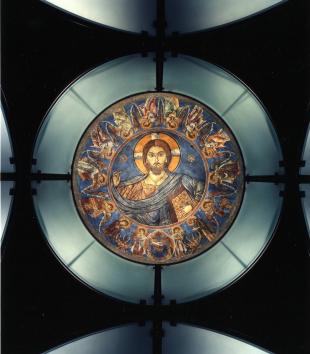MAVCOR Journal is an open access born-digital, double blind peer-reviewed journal dedicated to promoting conversation about material and visual cultures of religion. Published by the Center for the Study of Material and Visual Cultures of Religion at Yale University and reviewed by members of our distinguished Editorial Board and other experts, MAVCOR Journal encourages contributors to think deeply about the objects, performances, sounds, and digital experiences that have framed and continue to frame human engagement with religion broadly understood across diverse cultures, regions, traditions, and historical periods.
MAVCOR began publishing Conversations: An Online Journal of the Center for the Study of Material and Visual Cultures of Religion in 2014. In 2017 we selected a new name, MAVCOR Journal. Articles published prior to 2017 are considered part of Conversations and are listed as such under Volumes in the MAVCOR Journal menu.
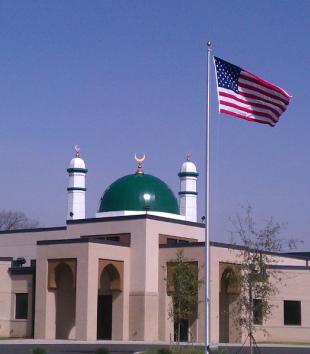 The Politics of (Mere) Presence: The Islamic Center of Murfreesboro, Tennessee
The Politics of (Mere) Presence: The Islamic Center of Murfreesboro, Tennessee
The old Islamic Center of Murfreesboro was not, it seems, meant to be seen at all. A yearning to blend in, be ordinary, unremarkable, even overlooked, would, as I later discovered, inflect the architectural presentiments of the old and new centers alike, and provide an apt metaphor for the struggles that have confronted the Islamic community in this small city in central Tennessee.
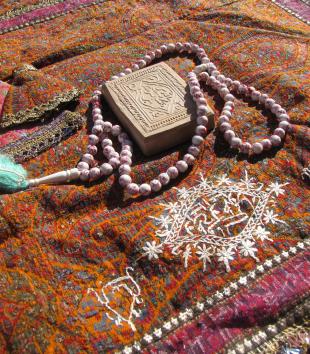 Praying through the senses: The Prayer Rug/Carpet and the Converging Territories of the Material and the Spiritual
Praying through the senses: The Prayer Rug/Carpet and the Converging Territories of the Material and the Spiritual
Consumption as a material practice changes religious meanings and practices, and value comes to be invested in certain religious objects, rituals, and ideas rather than others.
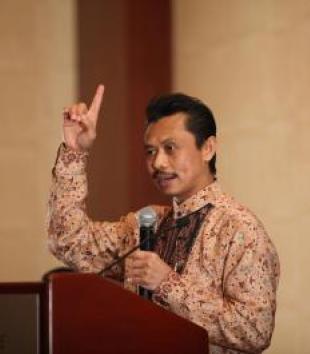 Imam Shamsi Ali: Thoughts on Islam and Material Culture
Imam Shamsi Ali: Thoughts on Islam and Material Culture
Imam Shamsi Ali is an Islamic scholar, Chairman of the Al-Hikmah Mosque in Astoria, and the Director of Jamaica Muslim Center in Queens.
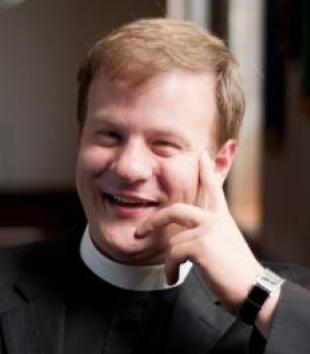 Reverend Alex Dyer: Tradition and Innovation in the Episcopal Church
Reverend Alex Dyer: Tradition and Innovation in the Episcopal Church
Ashley Makar interviewed Reverend Alex Dyer, priest-in-charge of St. Paul and St. James Episcopal Church of New Haven, CT in May 2011.
 Martin Puryear, Desire
Martin Puryear, Desire
The world of handmade objects and manual labor turns strange in Puryear's Desire, and in this way, the ordinary becomes—here is list of options, choose one—estranged, uncanny, defamiliarized.
 William Vander Weyde, Leon F. Czolgosz, McKinley Assassin
William Vander Weyde, Leon F. Czolgosz, McKinley Assassin
Early debates around the use of the electric chair pivoted on the convergence of state and divine power.
 The Balvanera Escudo
The Balvanera Escudo
Nun's badges worn in colonial New Spain not only articulated a woman’s religious affiliations, family fortune, and ethnic purity but also expressed her desire to influence political opinion.
 Adonai/Adidas T-Shirt
Adonai/Adidas T-Shirt
The t-shirt’s appropriation of a multinational sportswear corporation’s logo into a sacred Hebrew name for God could be simply a clever play on words, but a more critical approach might take into account the commodification of this sacred name for the deity and its subsequent selling in the marketplace for profit.
 Julie Dickerson: Creative Currents
Julie Dickerson: Creative Currents
Ashley Makar interviewed Julie Dickerson in 2010 while she was painting a mural of “dancing saints”—ranging from Moses’ sister Miriam to Martin Luther King—in the undercroft at St. James and St. Paul Episcopal Church in New Haven, Connecticut (affectionately nicknamed “St. PJ's”).
 C. C. A. Christensen, Joseph Preaching to the Indians
C. C. A. Christensen, Joseph Preaching to the Indians
Although LDS doctrine esteemed Native Americans as literal descendants of the peoples of the Book of Mormon, relations between Mormons and Indians in Utah grew increasingly strained as resources became scarce. Christensen’s work reflects this divided perspective.
 Portable Altar of Countess Gertrude
Portable Altar of Countess Gertrude
The portable altar seems to have developed in the missionary world of the seventh century, to meet the Church's requirement that Mass be celebrated only on a consecrated altar—a requirement that strengthened the position of bishops, who alone could consecrate them.
 Thomas Eakins, The Crucifixion
Thomas Eakins, The Crucifixion
In his 1880 The Crucifixion, Thomas Eakins, a reputed agnostic, crafted a realist interpretation of one of the central devotional subjects in Christian art, challenging the traditional iconography of the crucifixion by eliminating all signs of divine presence.
 Gordon Parks, Dresser in the bedroom of Mrs. Ella Watson, a government charwoman
Gordon Parks, Dresser in the bedroom of Mrs. Ella Watson, a government charwoman
Visibly claiming to regulate the prescribed Christian imitation of the biblical figures they represented, late-nineteenth and early-twentieth century statues of light-complexioned religious figures populated domestic spaces, churches, and missions fields, and implied that looking like Jesus or Mary or John might be more “natural” or “complete” for some than for others.
 Art That Breathes: Lewis deSoto’s Paranirvana (self-portrait)
Art That Breathes: Lewis deSoto’s Paranirvana (self-portrait)
Unlike its solid stone predecessor, deSoto’s work, made from painted polyethylene cloth, is hollow, filled only by air from a fan that keeps the sculpture inflated. The resemblance to the reclining Buddha is nonetheless remarkable, from the curls of hair to the folds of the robe, the one exception being that deSoto superimposed his own facial features, complete with goatee, on this Buddha.
 Chalkware, Plaster, Plaster of Paris
Chalkware, Plaster, Plaster of Paris
In the second half of the nineteenth century, in Europe and the United States, chalkware accomplished for three-dimensional devotional objects what chromolithography managed for images in two dimensions.
 James Latimer Allen, Madonna and Child
James Latimer Allen, Madonna and Child
During the Harlem Renaissance, mother and child portraits and figure studies were especially popular in the African American media, signaling the importance placed on motherhood and the nurturing of future generations.
 Aparajita Guha: Conversation about Contemporary Hindu Spiritual Practice
Aparajita Guha: Conversation about Contemporary Hindu Spiritual Practice
This conversation about spirituality happened in the home of Aparajita Guha in Rexford, New York, on June 20, 2012. Guha, a practicing Hindu, is a family friend of Ashley Makar, who is a practicing Christian.
 Viaticum, Last Rites Cabinet, Sick Call Set
Viaticum, Last Rites Cabinet, Sick Call Set
Among the material items that might occupy the pre-Vatican II American Catholic home, regardless for the most part of the occupant’s ethnicity or familial nation of origin, the last rites cabinet or viaticum (Latin for “supply of provisions for a journey”) asserted a powerful daily and nightly presence.
 Mark Rothko, No. 5/No. 22
Mark Rothko, No. 5/No. 22
Strong, gestural markings in the central red band distinguish this painting from Rothko’s other mature works. This anomaly consists of long, gently undulating lines formed by gouging the surface of the paint all the way to the canvas before it dried. Straining out from a central point, the horizontal lines contrast sharply with the fuzzy, indeterminate edges of the other elements of the painting.
 Ford Madox Brown, Work
Ford Madox Brown, Work
Ford Madox Brown’s allegory of labor in all its forms is the most ambitious Pre-Raphaelite painting of modern life and a profound meditation on the relationship between art, religion, and labor in Victorian society.
 Bertel Thorvaldsen, Christus (Christ)
Bertel Thorvaldsen, Christus (Christ)
The internationally famous Danish sculptor Bertel Thorvaldsen (1789–1838) was asked to produce a series of colossal statues of Christ, John the Baptist, and the apostles for the new Neoclassical Vor Frue Kirke of Denmark. Of these, Christus (Christ) has become best-known. Copies of the sculpture, often true to size or even larger, can be found around the world.
 Rabbi Jordie Gerson: Reflections on Images and Jewish Traditions
Rabbi Jordie Gerson: Reflections on Images and Jewish Traditions
Ashley Makar spoke with Rabbi Jordie Gerson on October 26, 2010 at Yale University’s Joseph Slifka Center for Jewish Life. Rabbi Jordie Gerson currently works as the Assistant Director and Campus Rabbi at University of Vermont Hillel.
 Barquitos del San Juan: La Revista de los Niños, Year 13, No. 23, 2007
Barquitos del San Juan: La Revista de los Niños, Year 13, No. 23, 2007
Rolando Estévez Jordán, a visual artist, and Alfredo Zaldívar, a poet, co-founded Cuba’s Ediciones Vigía (Watchtower Editions) in 1985 to create an open forum for writers, musicians, and artists.
 Carte de visite Photograph Album
Carte de visite Photograph Album
What photograph albums teach us about nineteenth-century viewing habits is that the reach of religion extended beyond compositionally “religious” subjects. Modes of beholding were often forms of religious practice that did not require a regulated rift between sacred and secular.
 Alexander Anderson, Abigail Hutchinson: A Young Woman Hopefully Converted
Alexander Anderson, Abigail Hutchinson: A Young Woman Hopefully Converted
That “Protestants don’t have pictures” remains a common generalization. Yet in the early nineteenth century, nothing could be further from the truth. Protestant publishers like the nonsectarian American Tract Society (ATS) lavishly decorated their tracts with small but expressive printed illustrations.
 The Chapel of Our Lord of the Miracles (La Capilla de Nuestro Señor de los Milagros), San Antonio, Texas
The Chapel of Our Lord of the Miracles (La Capilla de Nuestro Señor de los Milagros), San Antonio, Texas
No exact date is known for the founding in San Antonio, Texas, of the Capilla de Nuestro Señor de los Milagros (Chapel of the Lord of Miracles), or Capilla de los Milagros, as it is sometimes called. Visitors to the shrine and its central Christ image offer both their orations and material expressions of prayer.
 Opening Virgin (Vierge Ouvrante)
Opening Virgin (Vierge Ouvrante)
This object is an example of a type of small-scale Christian moveable-part medieval sculpture called a Vierge Ouvrante (“Opening Virgin”).
 Traveling Image of the Holy Child of Atocha (Santo Niño de Atocha), Plateros, Mexico
Traveling Image of the Holy Child of Atocha (Santo Niño de Atocha), Plateros, Mexico
Each year, certain special religious images are ceremonially brought from Mexico and Central America to visit Catholic devotional communities in Southern California. These devotional statues of Catholic saints are “imágenes peregrinas,” pilgrim or traveling images.
 Arthur B. Davies, Sacramental Trees
Arthur B. Davies, Sacramental Trees
Two maidens, one bright and one shadowy, lead an ox through a curiously dense, shallow, and cubistically-fragmented woodland, heading (one presumes) through the titular sacramental trees and towards an uncertain destination.
 Drain-spout in the Form of a Flying Celestial Figure
Drain-spout in the Form of a Flying Celestial Figure
Hovering above the central courtyard of a Hindu monastery at the rural central-Indian village of Chandrehe was once a set of finely sculpted flying celestials, known within their original, tenth-century context as gandharvas, heavenly singers in the court of the gods, or vidya-dharas, meaning “carriers of truth.”
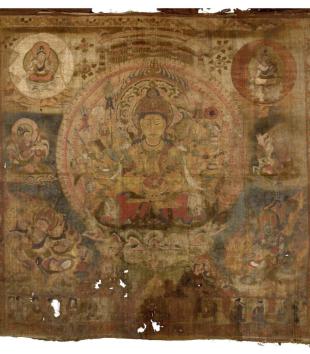 Thousand-armed and Thousand-eyed Avalokiteshvara
Thousand-armed and Thousand-eyed Avalokiteshvara
Avalokiteshvara, one of the most important bodhisattvas in Buddhism, was popularly known as the “perceiver of the world’s cries.” Bodhisattvas, meaning literally “enlightened beings,” were devoted, out of a deep sense of compassion, to aiding other sentient beings in their quest for enlightenment, even to the point of postponing their own entry into nirvana.
 The Vincent and Mary Markham Monument
The Vincent and Mary Markham Monument
In the summer of 1900, Denver acquired an unusual sculpture to mark the last resting place of pioneer attorney Vincent Daniel Markham (1826-1895) and his wife Mary (ca. 1834-1893).
 Cuzco Miter
Cuzco Miter
The Cathedral of Cuzco, Peru holds several liturgical ornaments from the Spanish colonial period in its treasury. Among them is a magnificent embroidered miter, the headdress worn by bishops for blessings, baptisms, and processions.
 Kwame "Almighty" Akoto, The Supernatural Eyes of God
Kwame "Almighty" Akoto, The Supernatural Eyes of God
During a trip to Ghana in May 2010, I visited the roadside shop and atelier of painter Kwame Akoto, alias “Almighty,” a name he adopted so as to praise the power of God.
 Rightly Dividing the Word of Truth
Rightly Dividing the Word of Truth
Clarence Larkin’s dispensationalist chart “Rightly Dividing the Word of Truth” (1920) offers a detailed schematic of biblical history. The artistic product of an individual with experience in mechanical draftsmanship, Larkin’s chart shows how events and epochs fit together like parts in a salvation machine.
